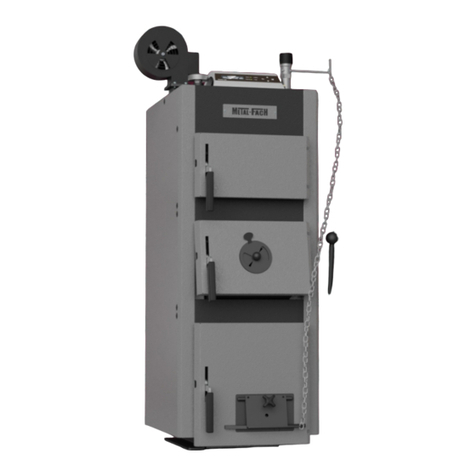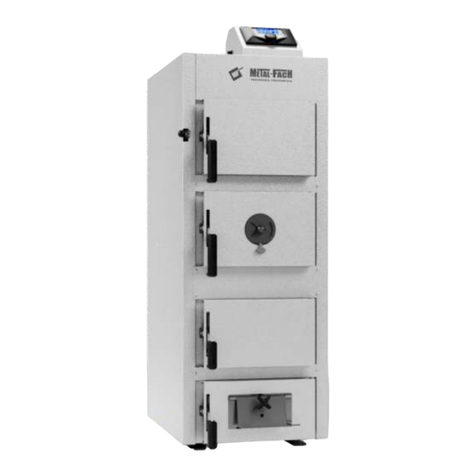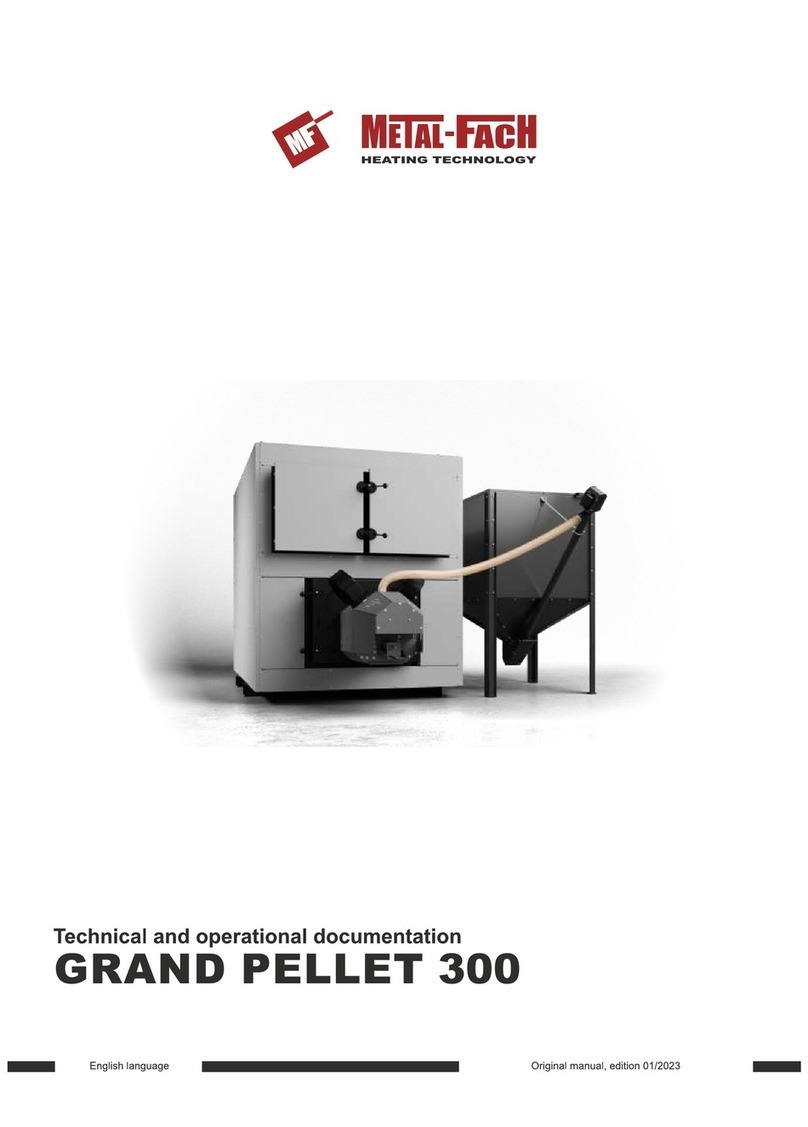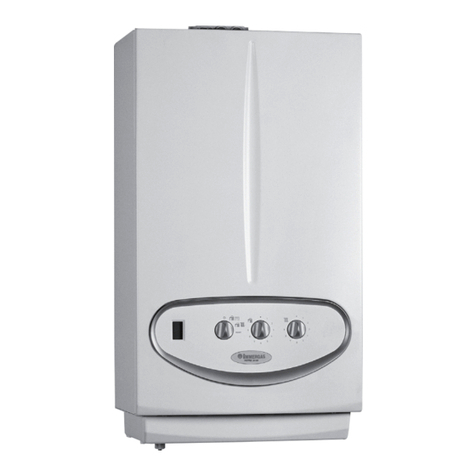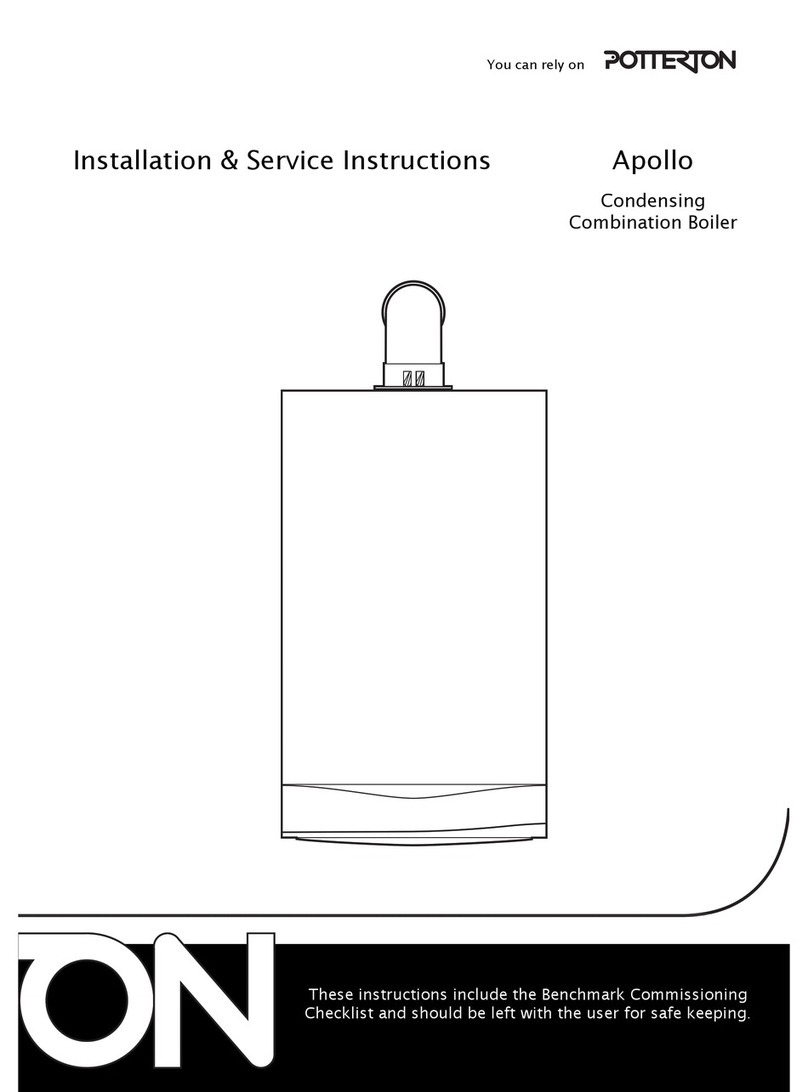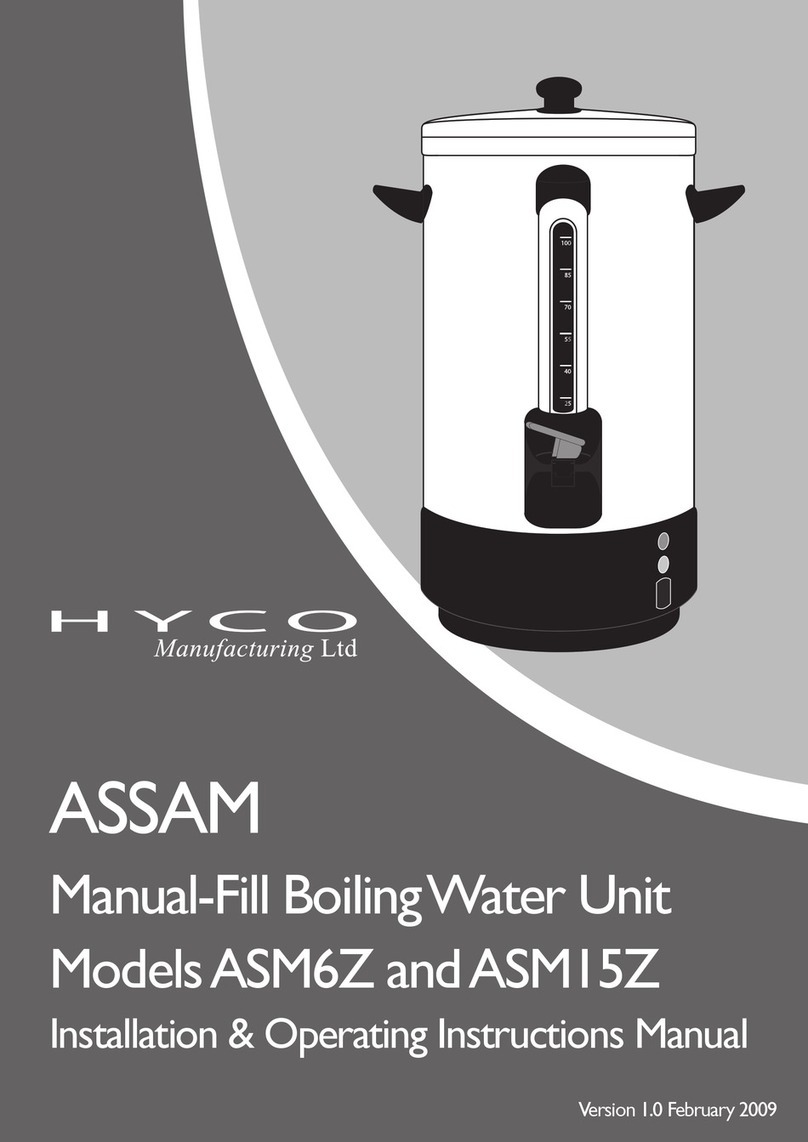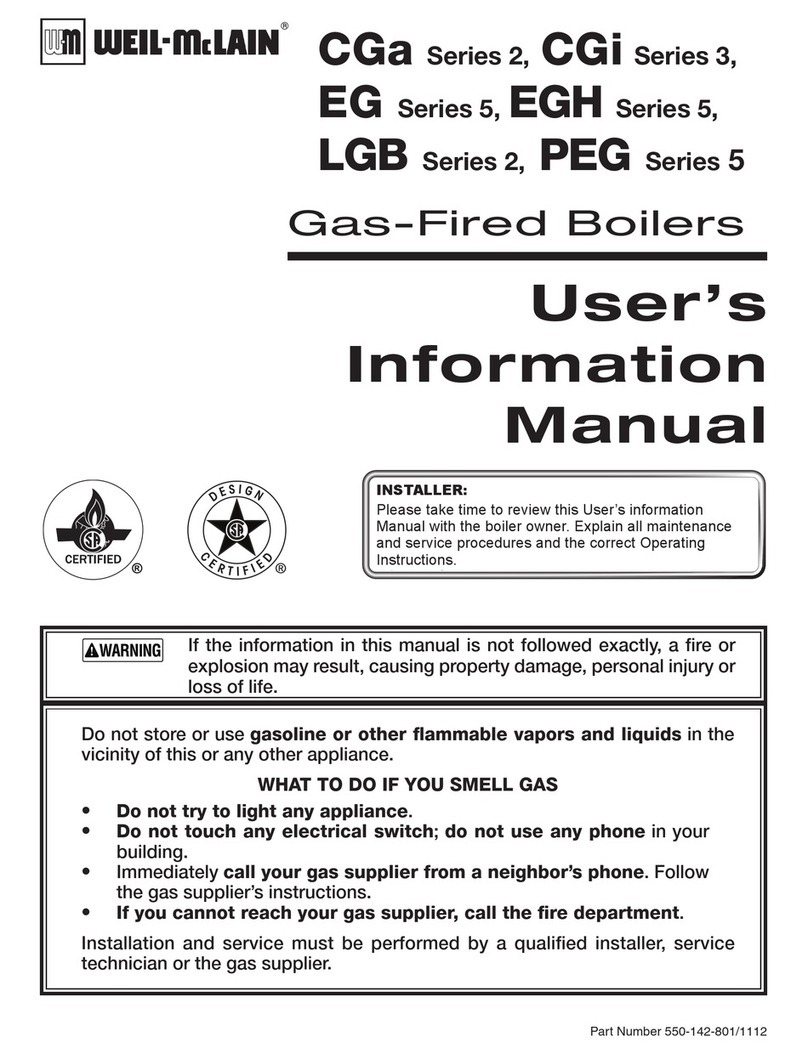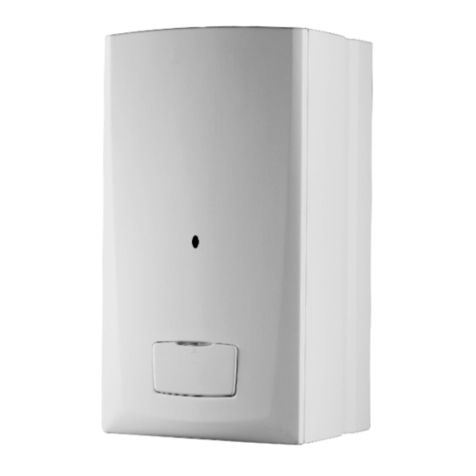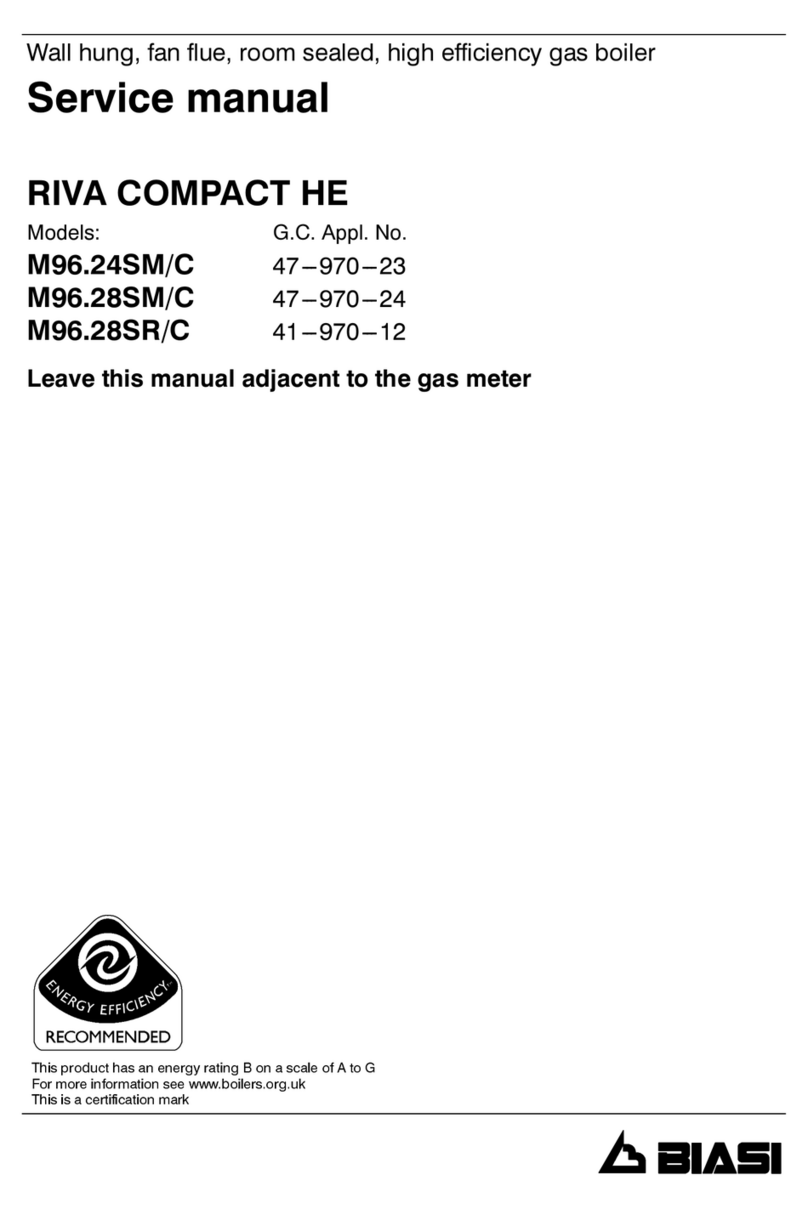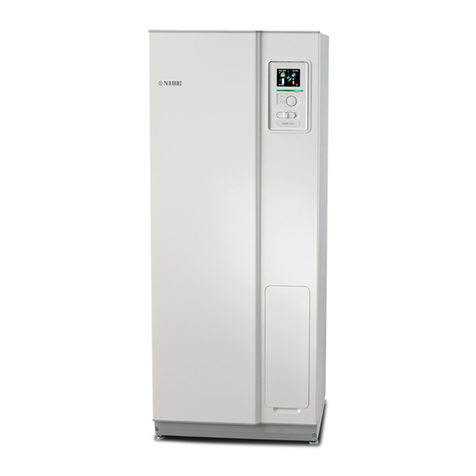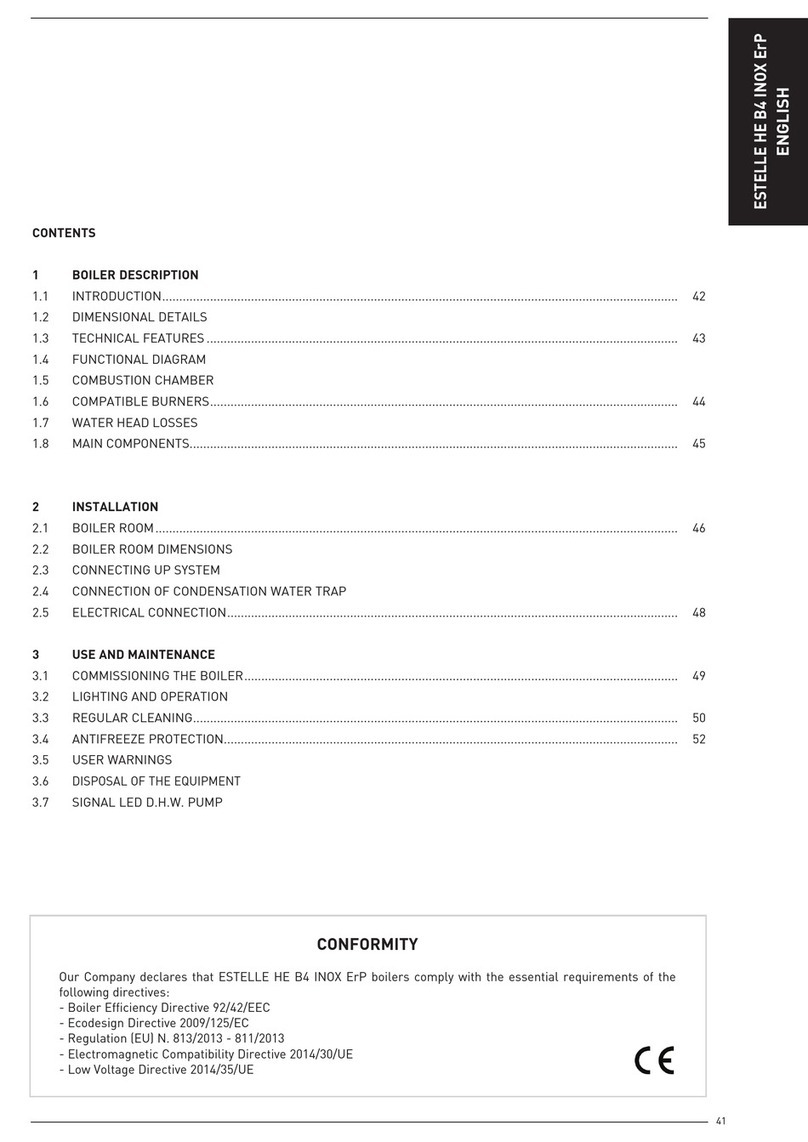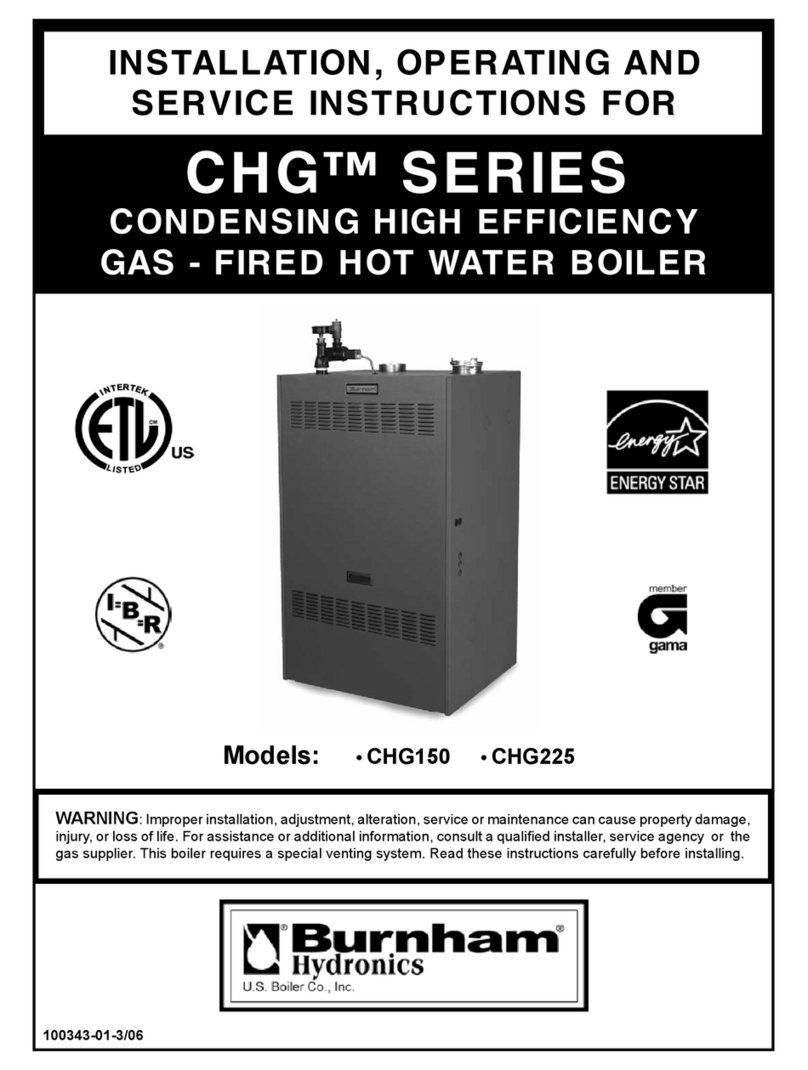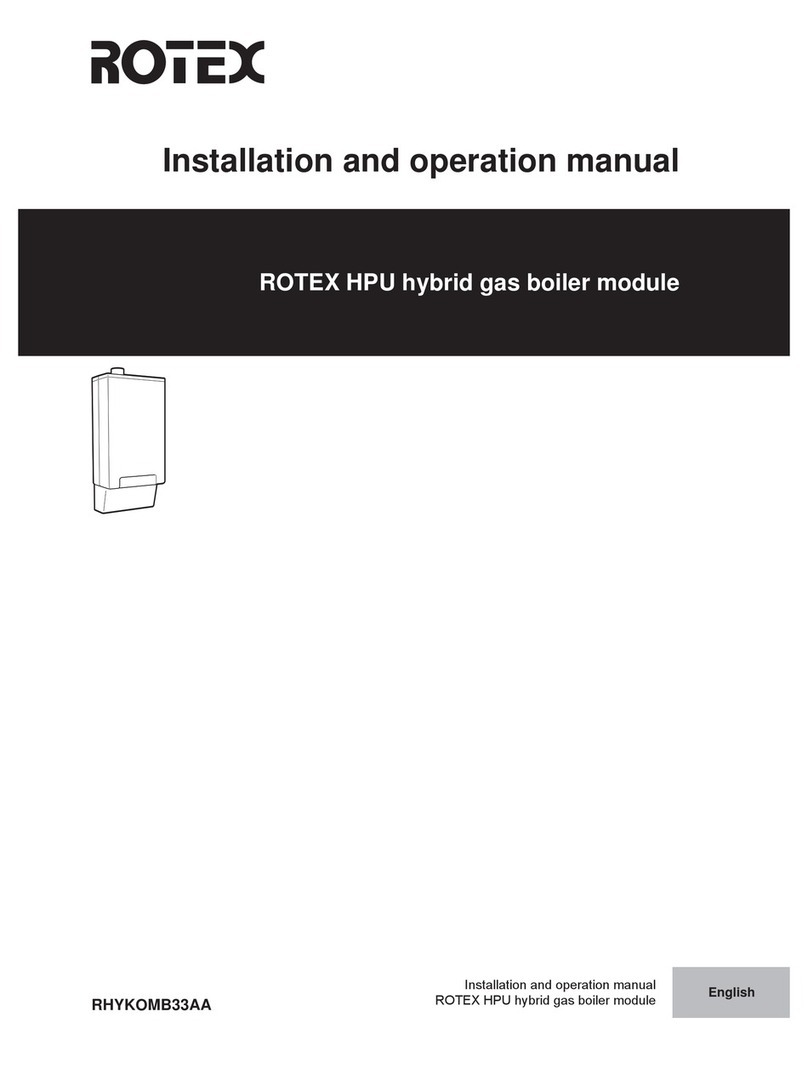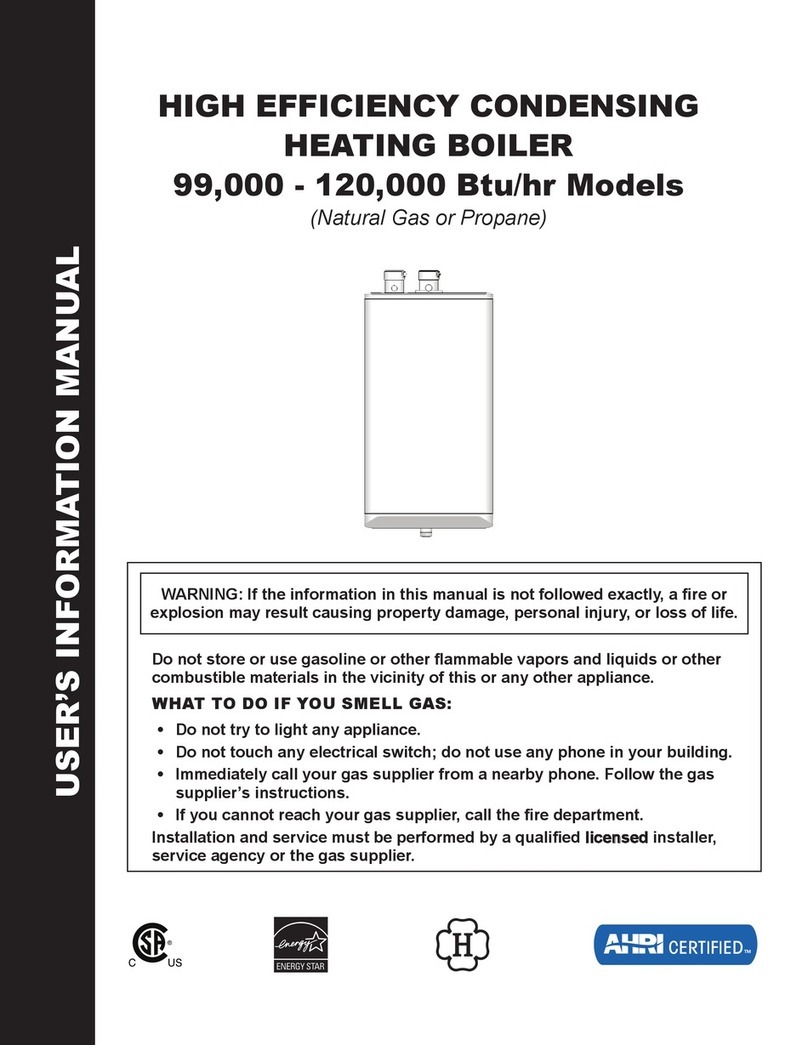
17
17. Connecting the boiler to the chimney
(INSTALLER)
Smoke flue
The flue pipes extract the fumes outside and intake air used for burning fuel. The necessary
draught depends on:
the temperature difference between the hot fumes and cold air
proper chimney height
the chimney diameter should be no less than 20 x 20 cm
chimney properties (smooth surfaces inside and outside) grout tightness
The effective height of the chimney is the difference between the highest grate and the flue
outlet. The effective height of the individual chimneys must be at least 4 m and of collective
chimneys for solid and liquid fuels should be at least 5 m. the difference between the two grates
can’t be greater than 6,5 m.
In case of sloping roofs, the chimneys should end at the ridge, in the area of free wind. It
prevents any draught brakes. Pay attention to the location of the building in relation to the
buildings around.
Choosing chimney
In most cases, choosing the right chimney is done by using an approximation method or
according to manufacturer’s recommendations. In special cases (bad pressure conditions, large
volume of fumes) the chimneys are chosen according to the PN-EN 13384-1+A2:2008 Norm.
Chimneys for solid fuels boilers
It must be noted that the solid fuel grates of nominal thermal power of >20 kW and without
vent require separate chimney.For the solid fuel grates, single-layer brick chimneys can be used.
Today, three-layer chimneys of smooth surface and good thermal insualtion are commonly used.
Flue
The boiler is connected to the chimney with a flue and smoke flue. The smoke flue consists of
pipes and fittings which are set in rooms. The smoke flues meet the requirements set in the
chimney fire hazard regulations and are often made from the same material as the main chimney.
The smoke flues should be made from non-flammable materials. The smoke flues or their
housings should meet the requirements set in the small chimneys fire test Polish Norm. It is
allowed to build the housing from solid bricks of 12 cm thickness. The bricks should be set on the
cement- plaster mortar with outer plaster or binder. The connections should be kept as short as
possible and set in the upright direction to the chimney in order to avoid heat losses and
additional resistance. They cannot be set to other rooms. The fumes pipes should not be set in
rooms where furnaces cannot be installed, moreover, they cannot installed in walls and ceilings.
Due to low fumes temperature, in order to protect the chimney from dampness and draught limit,
use the acid- resistant or ceramic chimney liners with condensate discharge to the waste drain.
The distance between the chimney and the closest tree top line should be at least 6m.
18. Boiler start-up
(USER/INSTALLER)
ATTENTION!
The controller settings can be regulated depending on the variety of the existing
central heating systems, heating requirements of the bulding and calorific value of
the fuel. The boiler parameters are set by the user and it is not serviced by the
company.
Before starting fire in the boiler, make sure that the central heating installation has been
installed properly and filled with water- until it flows over through the overflow pipe from the
expansion vessel.
For the best results, the installation should ideally be filled with softened water/ chemically
treated water, distilled water or rain water.
Moreover, it must be checked whether the retort burner has been cleaned from residue of
unburnt fuel, ash and slag from the previous burning and whether ash has been removed from
the ash pan.
Close all doors for the duration of firing up. After a stable flame is obtained, switch the
regulator to automatic work, causing the fuel feeder and fan to activate automatically.
Set the desired boiler work temperature, typically 70-80 ºC. From now on, the boiler will work
automatically, as per the settings configured by the user on the regulator according to the
regulator's instruction manual, intended for the user and attached to this instruction manual.
Inspect the burning process periodically through the observation door. Ash and slag from the
burnt fuel gradually fall into the container in the ash pan, meaning that the burner is self-cleaning.
In the event where a piece of slag is suspended between the boiler’s wall and the burner, remove
it using a poker or hook.
The regulator protects the boiler against: exceeding maximum water temperature in the
boiler, blowback of embers into the fuel feeder, and shuts down the entire system in the absence
of fuel.
A sensor reacting to flame reversion from the burner to the feeder is located on the feeder's
pipe between the retort burner and fuel dispenser. In such a case, the fan is shut down
immediately and the continuous feeder work is initiated until the burning or smoldering coal is
pushed from the feeder and retort burner into the ash pan.
The boiler’s user should read the user’s manual of the microprocessor-based regulator
thoroughly.
After starting a cold boiler, or at first start-up, the boiler can “sweat”. It may seem like it is
leaking. In such case, you must perform intense combustion (70-80ºC) in order to dry and warm
the boiler and chimney vent through, even for 2-3 days.
To ensure longer boiler operation, it advised to keep the fumes temperature 180C above the
outside temperature and the water temperature in the boiler should not be lower than 60C. In
such situation, keeping an appropriately low temperature in the radiators in the autumn-spring
season can be done, amongst others, by:






















